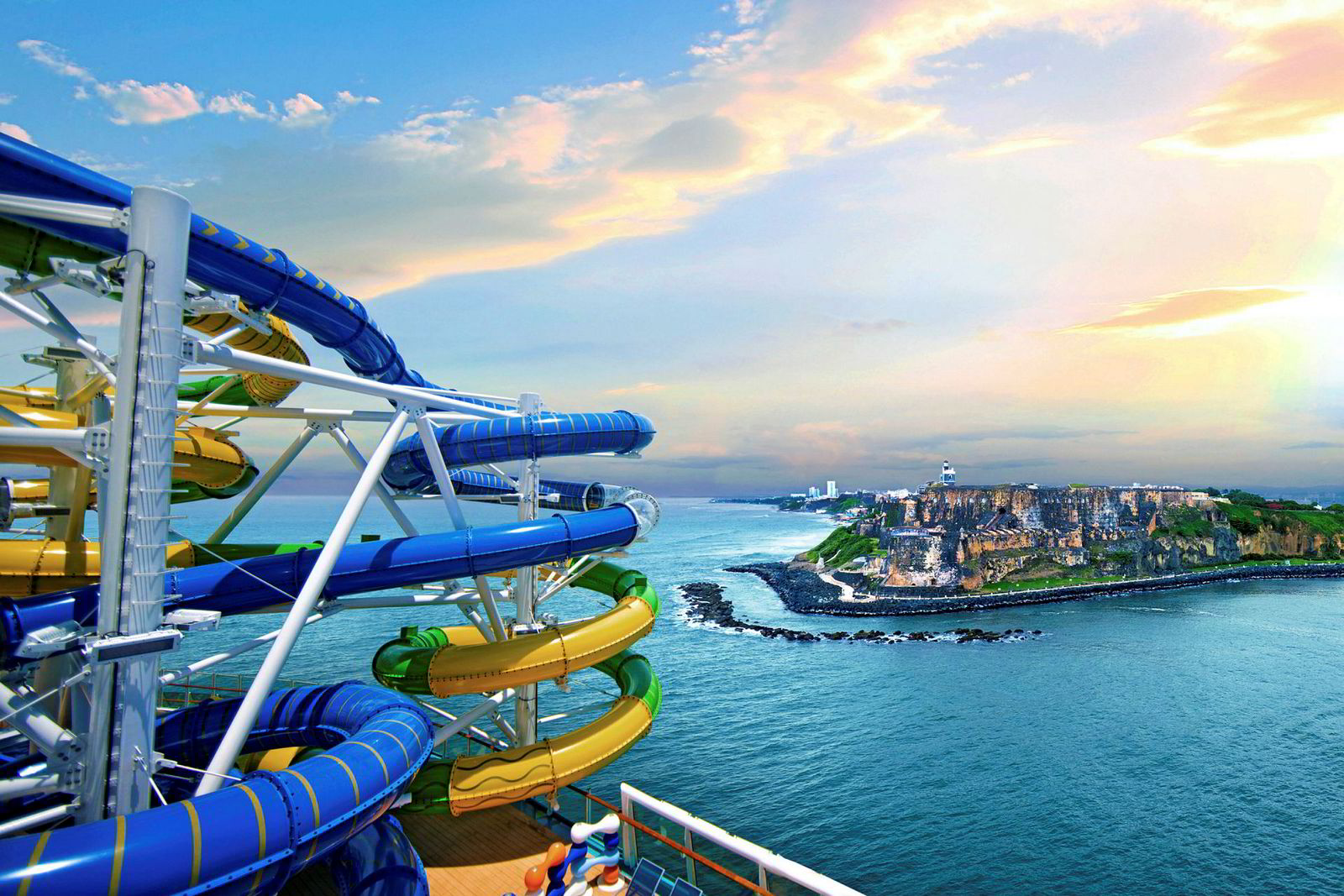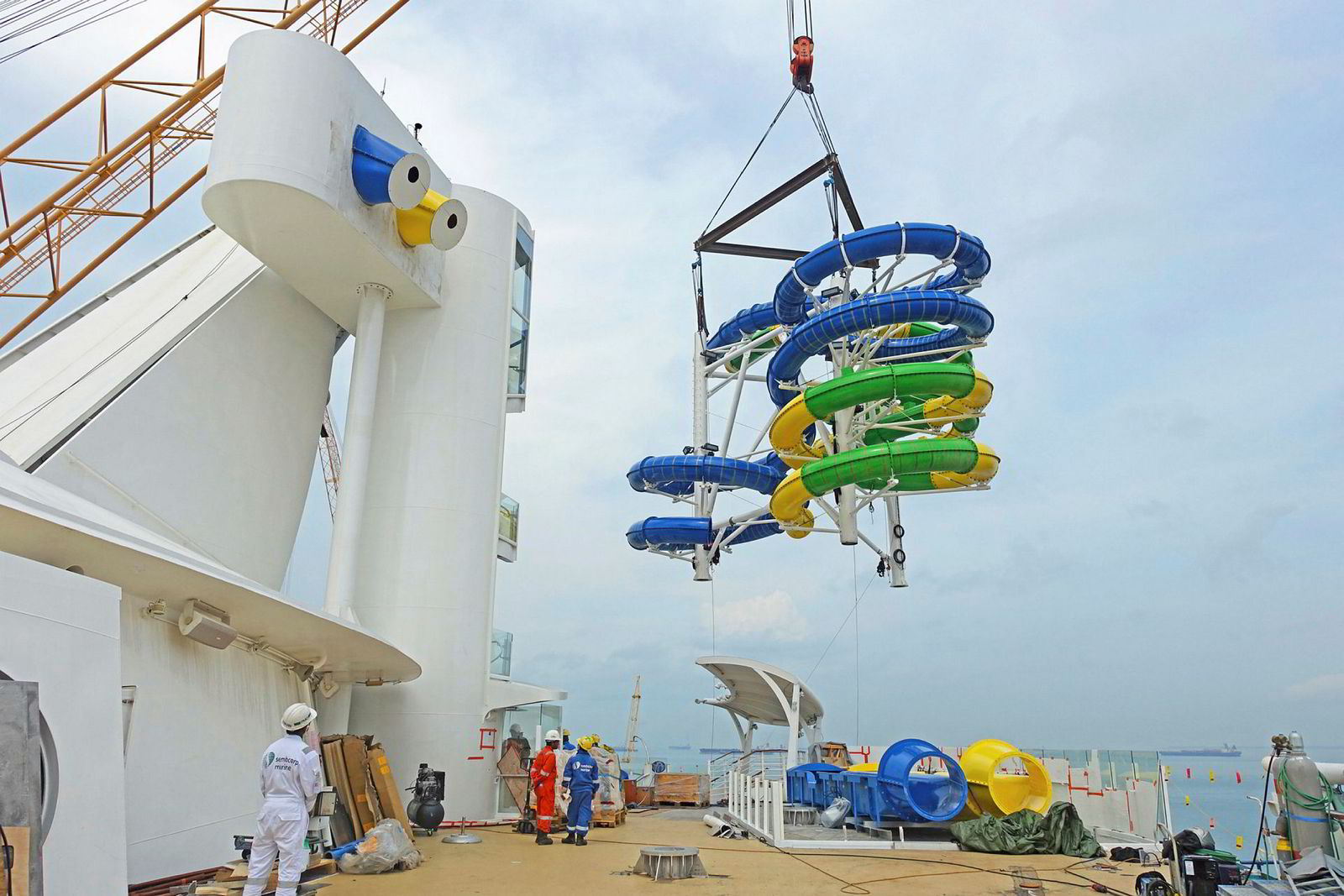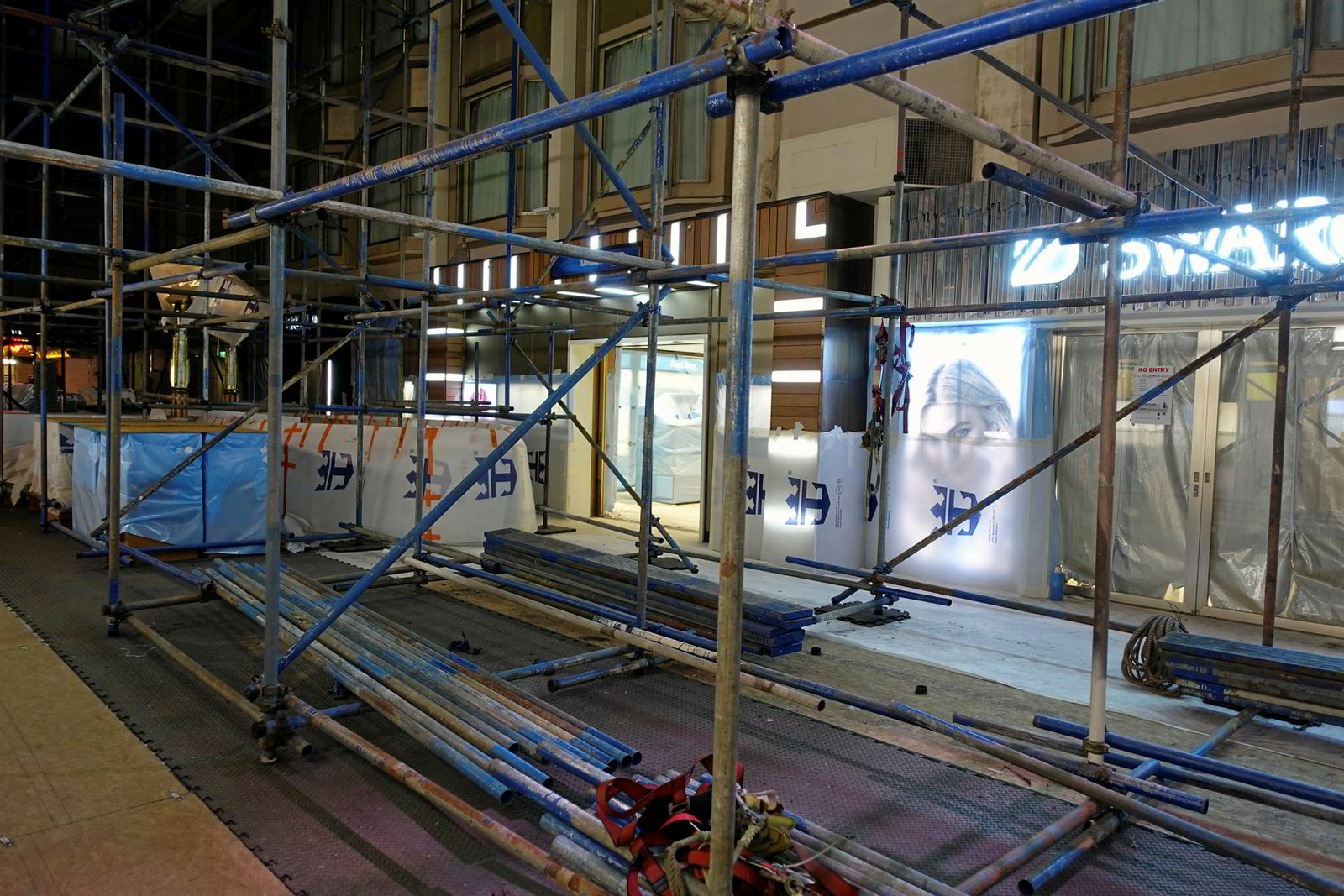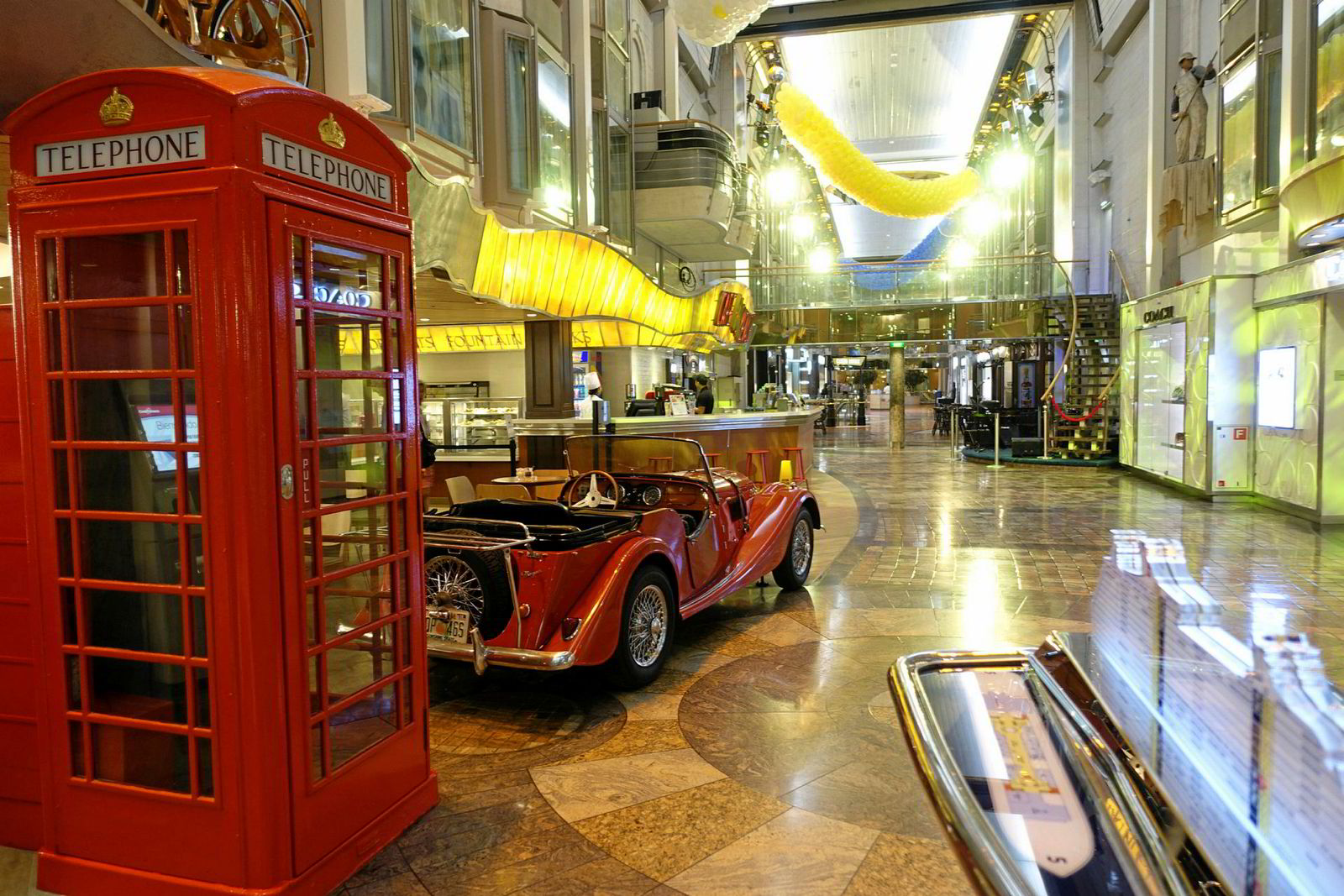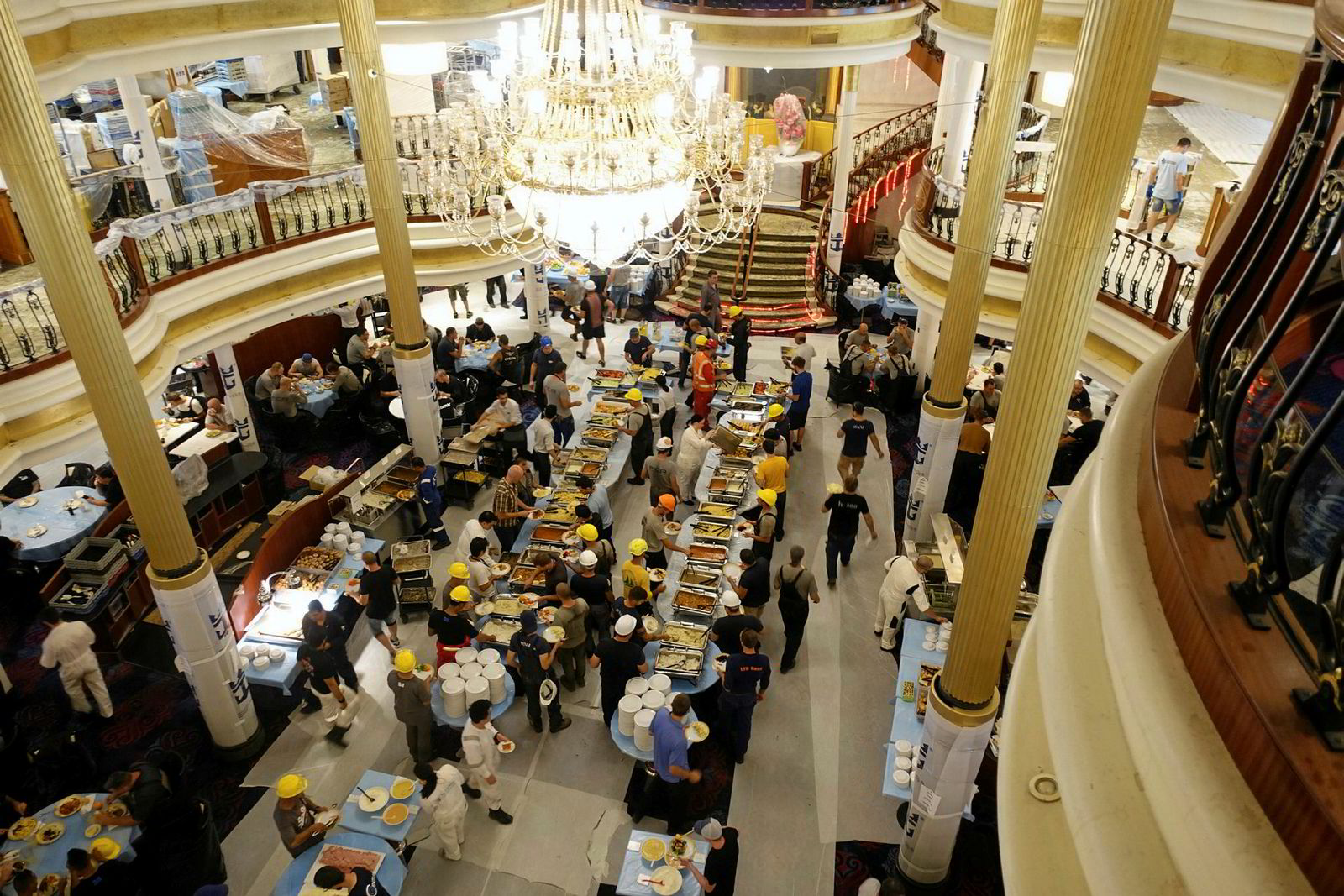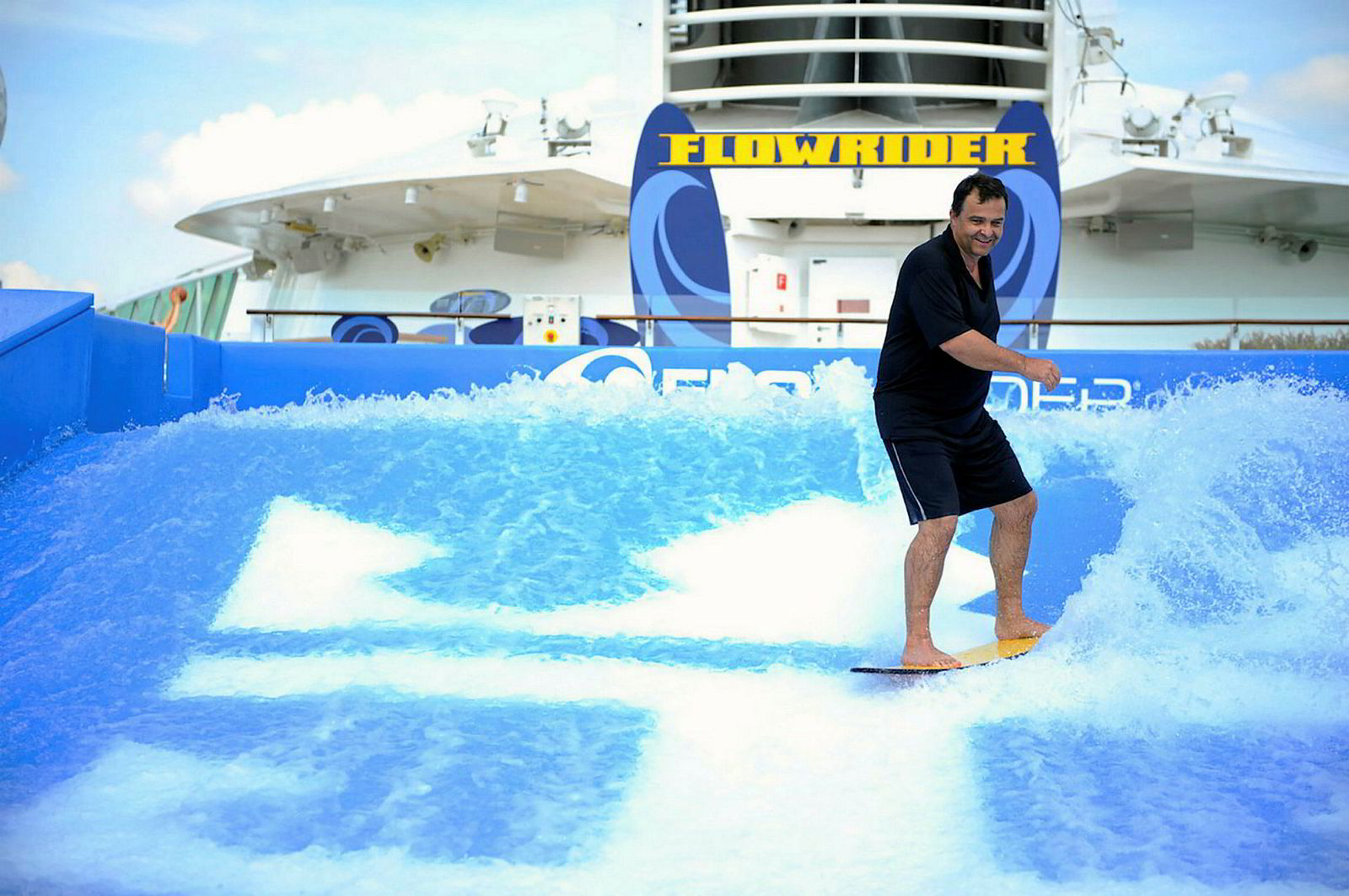Refurbishing the cruiseship Voyager of the Seas has cost $97m. What do you get for that kind of money, when you could build a new VLCC for about the same amount?
The refit involved a major makeover at Singapore’s Sembawang Shipyard, but the dry-docking and “facelift” of the Kvaerner-built, 137,000-gt cruiseship took only 41 days, while construction of a big tanker would take up to two years.
Constructing a new vessel would have cost Royal Caribbean International (RCI) hundreds of millions of dollars. The Voyager of the Seas was reported to have cost $650m when it was built 20 years ago, and revamping a cruiseship these days requires adding a new generation of tech-savvy equipment and features.
The Voyager of the Seas is one of 10 vessels undergoing RCI’s $1bn Royal Amplified refurbishment programme. Its refit, “the largest revamp of a cruiseship for RCI in Singapore, with 700 containers shipped in”, according to newbuild project manager Jamie Coates, was completed in October.
Capacity was increased from 4,269 to 4,442 guests. Highlights of the makeover include two new three-storey racer water slides that have been dubbed the Perfect Storm to give guests “deck-defying thrills”, plus a Battle for Planet Z laser-tag game.
A further 72 inside and balcony staterooms were added to the 13-deck ship, and it now has a nursery for babies and tots under three years.
“Our goal is to please family members from very young to grandparents,” RCI associate hotel director Umit Erdogan says.
“Every stateroom will be getting a brand-new TV. We are replacing 1,800 sets and adding 700 TVs in crew rooms. Crew cabins used to have only one TV, but now there will be one TV per bunk bed.”
The cruise line put a lot of effort into crew welfare, upgrading their dining facilities, furniture and flooring. “RCI believes happy crew; happy guests. It all starts with crew satisfaction. We want to give them as much as possible and we want them to stay longer with us,” Erdogan says.
On the technical side, Captain Wu Huimin says the ship received a complete overhaul of its main engines, propeller, stabiliser and thrusters. Four closed-loop scrubbers were installed to meet the IMO 2020 sulphur cap. The remaining two engines will burn diesel.
Planning for the refit began 24 months earlier, and reshaping the ship involved 2,250 contractors.
The 1,200 crew remained onboard the Voyager of the Seas during the dry-docking, but swapped their uniforms for overalls.
It was “business as usual” for the crew, says Gary Waugh, hotel director of the ship; 20,000 meals were served each day, to cater for five sittings for the thousands of crew and workers onboard at any one time during the refit.
Coates’ working days were long: he started at 4am and ended after 10.30pm. “Such a volume of work and such a volume of questions to answer. The only way to deal with them is to start the day before anyone else, and end after everyone has stopped.”
